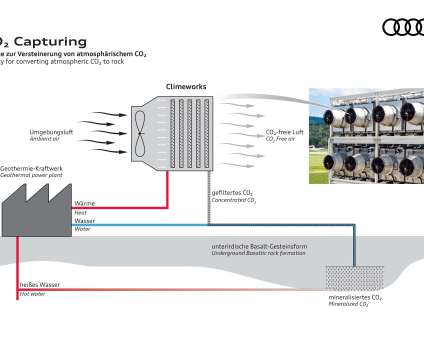Audi partnering with Climeworks on CO2 direct air capture and storage
Green Car Congress
SEPTEMBER 8, 2020
Water from the Hellisheiði power plant then flows through the facility and transports the carbon dioxide roughly 2,000 meters below the surface of the Earth. The water returns to the cycle of the geothermal power plant. Furthermore, the rock in Iceland has the ideal composition for storing large amounts of CO 2.












Let's personalize your content